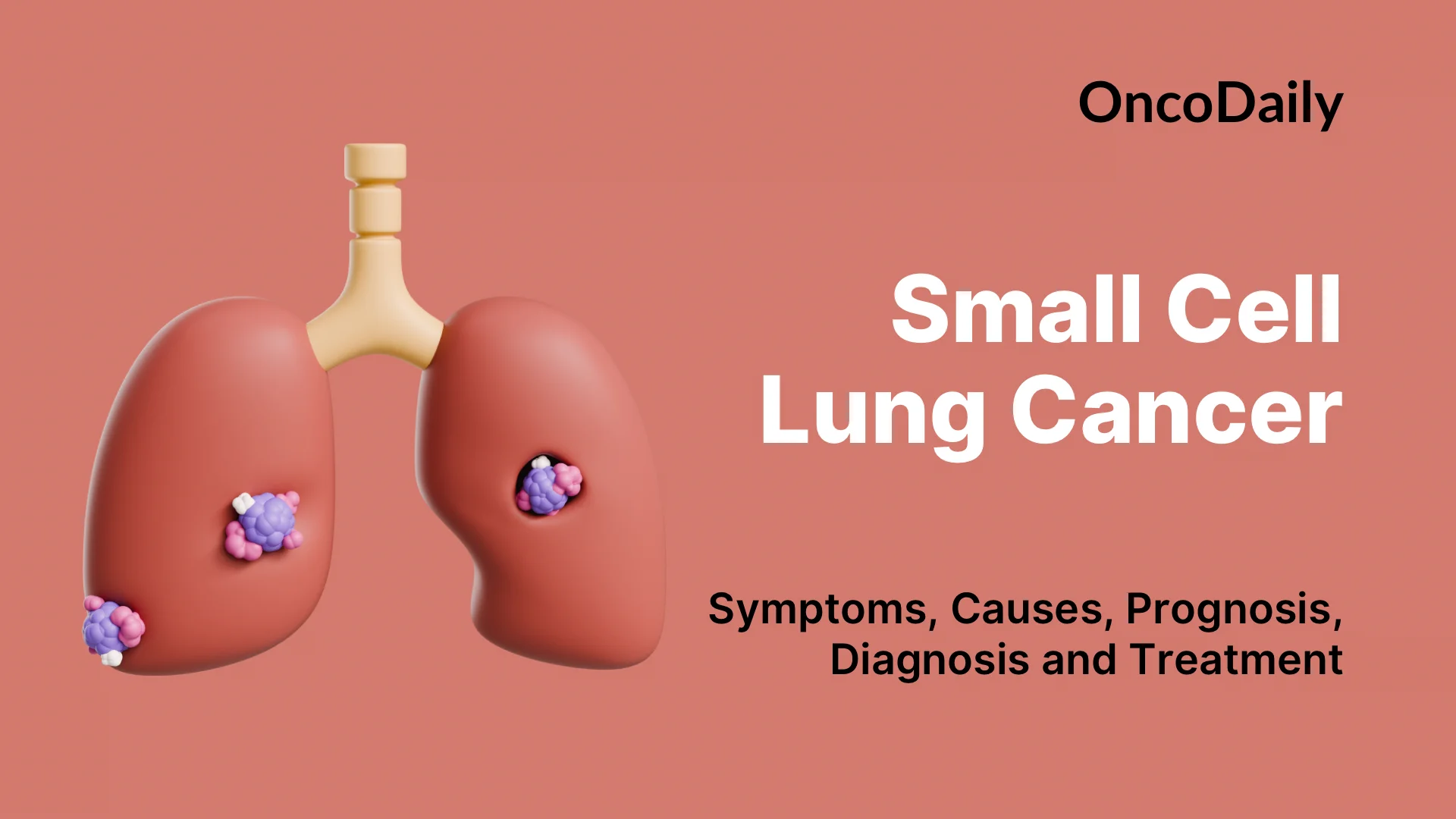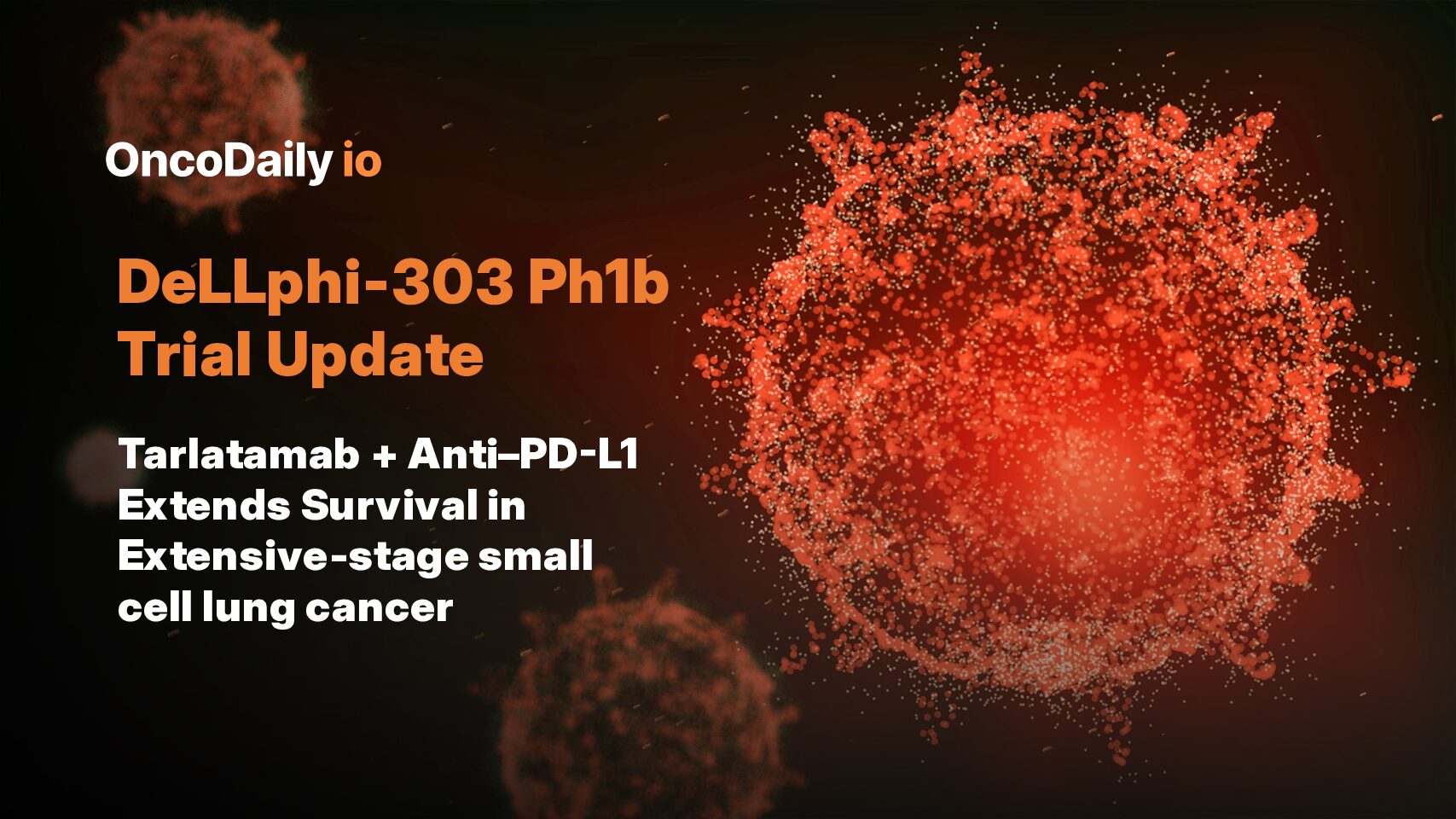Original Study Title: Safety and Survival Update of Tarlatamab with Anti-PD-L1 as 1L Maintenance After Chemo-IO for ES-SCLC: DeLLphi-303 Ph1b Trial
Background
Extensive-stage small cell lung cancer (ES-SCLC) is highly aggressive, with most patients relapsing within a year despite standard chemoimmunotherapy, and median overall survival rarely exceeding 12–13 months. Novel maintenance strategies are urgently needed.
DLL3, a Notch pathway ligand, is expressed in the majority of SCLC tumors but absent in normal tissues, making it an ideal therapeutic target. Tarlatamab (Imdelltra) is a DLL3-directed bispecific T-cell engager (BiTE®) that redirects T cells to attack DLL3-positive tumor cells. Early studies in relapsed SCLC showed durable responses with manageable toxicity, mainly low-grade cytokine release syndrome.
The phase 1b DeLLphi-303 trial tested whether adding tarlatamab to anti–PD-L1 therapy as first-line maintenance after chemoimmunotherapy could sustain immune activity and improve survival in ES-SCLC—a setting where prior maintenance strategies have largely failed.
Methods and Study Design
The phase 1b DeLLphi-303 trial (NCT05361395) was a nonrandomized, multicenter study with extended follow-up, designed to evaluate the safety and efficacy of tarlatamab in combination with anti–PD-L1 therapy as frontline maintenance for patients with extensive-stage small cell lung cancer (ES-SCLC). Eligible patients (n=88) had an ECOG performance status of 0–1 and no evidence of progression following 4 to 6 cycles of first-line chemoimmunotherapy.
Patients were assigned to one of two maintenance regimens: 48 received tarlatamab 10 mg intravenously every two weeks combined with atezolizumab 1,680 mg every four weeks, while 40 received tarlatamab 10 mg every two weeks paired with durvalumab 1,500 mg every four weeks. Treatment continued until disease progression, unacceptable toxicity, or withdrawal.
The primary endpoints included safety and tolerability, specifically dose-limiting toxicities (DLTs), treatment-related adverse events (TRAEs), and treatment-emergent adverse events (TEAEs). Secondary efficacy endpoints were progression-free survival (PFS), overall survival (OS), objective response rate (ORR), duration of response (DOR), and disease control rate.
Results of the Study
With a median follow-up of 18.4 months, the combination of tarlatamab plus anti–PD-L1 therapy demonstrated promising efficacy. The median OS reached 25.3 months (95% CI, 20.3–not evaluable), while the median PFS was 5.6 months (95% CI, 3.5–9.0). Overall, 60% of patients achieved disease control, with 36% maintaining control for at least 52 weeks; the median duration of disease control was 14.6 months. The objective response rate was 24%, including two complete responses and 19 partial responses, with a median duration of response of 16.6 months (95% CI, 7.1–not evaluable).
The safety profile was favorable. No dose-limiting toxicities or fatal TRAEs were reported. TEAEs decreased in frequency over time, and treatment discontinuations due to toxicity occurred in only 6% of patients. The most common adverse events included cytokine release syndrome (56%), dysgeusia (53%), fatigue (38%), and headache (32%). Importantly, CRS events were predominantly grade 1–2, occurred early during cycle 1, and resolved with standard supportive care.
Key Takeaway Messages
- Tarlatamab plus anti–PD-L1 maintenance showed unprecedented survival for ES-SCLC.
- Safety profile was manageable with no new safety signals; long-term tolerability confirmed.
- These data support ongoing evaluation in the phase 3 DeLLphi-305 trial (NCT06211036) as a potential new frontline standard.

You Can Read About Small Cell Lung Cancer: Symptoms, Causes, Types, Diagnosis and Treatment
